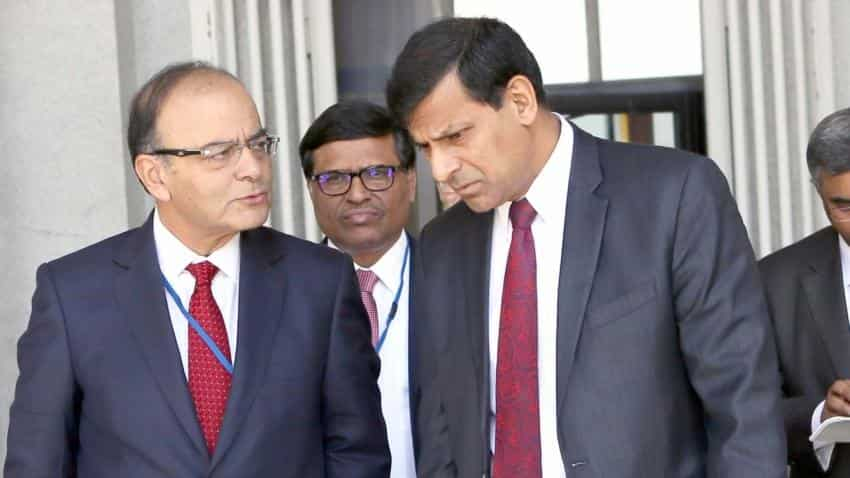Skeletons in the closet: India bad loans getting messier

India`s bad-loans problem looks much worse than lenders have been willing to acknowledge, heaping pressure on banks` profits and further tightening the screws on distressed debt that could be bigger than New Zealand`s $170 billion economy.
The magnitude of the debt-mess was laid bare late last month when two of India`s largest private sector lenders provided unprecedented guidance on non-performing loans, underscoring repeated warnings by
Reserve Bank of India`s governor Raghuram Rajan on the need to clean up banks` balance sheets.
The dangers are clear cut. Increasing provisions to cover rising bad loans are likely to hurt banks` profits and curb credit growth, stoking a vicious circle of lower economic growth triggering more defaults and choking off business investment and production.
Indeed, banks` loan growth at 10.7 percent in the last fiscal year ended March 31, was the slowest in nearly two decades, partly on lower lending to debt-heavy sectors such as iron and steel that account for the lion`s share of bad debt.
Profits at most lenders have also taken a hit in the past six months as they set aside a higher sum to cover for defaults after a clean-up exercise ordered by the RBI.
"The banks need to keep provision covers high," said Abhishek Bhattacharya, a director at Fitch`s Indian affiliate, India Ratings and Research. "That all points to the fact that the earnings should continue to be under pressure."
Bhattacharya estimates about 13 trillion rupees ($195 billion), or a fifth, of bank loans are already stressed - bigger than the size of New Zealand`s economy.
That compares with 8.06 trillion rupees of distressed loans reported as of December or 11.5 percent of India`s entire bank debt, meaning more pressure on profits.
DEEP SURGERY
RBI`s Rajan, who wants banks to fully disclose and provide for bad debt by March 2017, is calling for "deep surgery" to clean up the balance sheets.
Investors and analysts have long suspected that Indian lenders, especially the dominant state-run banks, are not disclosing the true extent of their troubled loans to avoid having to raise provisions.
But granular details released for the first time last month by ICICI Bank and Axis Bank - India`s no. 1 and no. 3 private sector lenders respectively - highlighted the depth of the problem.
Axis Bank disclosed it had put 226 billion Indian rupees of its loans on a `watch list`, and was expecting 60 percent of those to default within two years. That would mean its bad debt could triple from the 60.88 billion rupees reported at end-March.
ICICI said some 525 billion rupees of loans to struggling sectors including steel and power had been put on watch.
Moody`s estimates bad loans at the 11 state-run banks it rates to be between 10.5 and 12 percent, compared with the 7.2 percent reported as of end-December.
"The ability of (state) banks to support economic growth or to provide loans will ultimately depend on how the government will support them in terms of capital," said Alka Anbarasu, a Singapore-based vice president at Moody`s.
These state-owned banks account for more than two-thirds of the sector`s assets and about 85 percent of bad debts - a major headache for policymakers keen to support a slowing economy.
"It could get worse before it gets better is the sense we have," India Ratings` Bhattacharya said.
Get Latest Business News, Stock Market Updates and Videos; Check your tax outgo through Income Tax Calculator and save money through our Personal Finance coverage. Check Business Breaking News Live on Zee Business Twitter and Facebook. Subscribe on YouTube.
RECOMMENDED STORIES

Rs 3,500 Monthly SIP for 35 years vs Rs 35,000 Monthly SIP for 16 Years: Which can give you higher corpus in long term? See calculations

SBI 444-day FD vs PNB 400-day FD: Here's what general and senior citizens will get in maturity on Rs 3.5 lakh and 7 lakh investments in special FDs?

SCSS vs FD: Which guaranteed return scheme will give you more quarterly income on Rs 20,00,000 investment?

Looking for short term investment ideas? Analysts suggest buying these 2 stocks for potential gain; check targets

Power of Compounding: How long it will take to build Rs 5 crore corpus with Rs 5,000, Rs 10,000 and Rs 15,000 monthly investments?
03:21 PM IST









 China Evergrande Crisis: Evergrande to raise $5 billion from property unit sale
China Evergrande Crisis: Evergrande to raise $5 billion from property unit sale A Historic Low: What's really happening with bank credit growth?
A Historic Low: What's really happening with bank credit growth? The debt threat lurking behind India's zombie power plants
The debt threat lurking behind India's zombie power plants Vijay Mallya's Twitter account hacked
Vijay Mallya's Twitter account hacked NPAs nearly doubled to 8.5% in Q1: Report
NPAs nearly doubled to 8.5% in Q1: Report